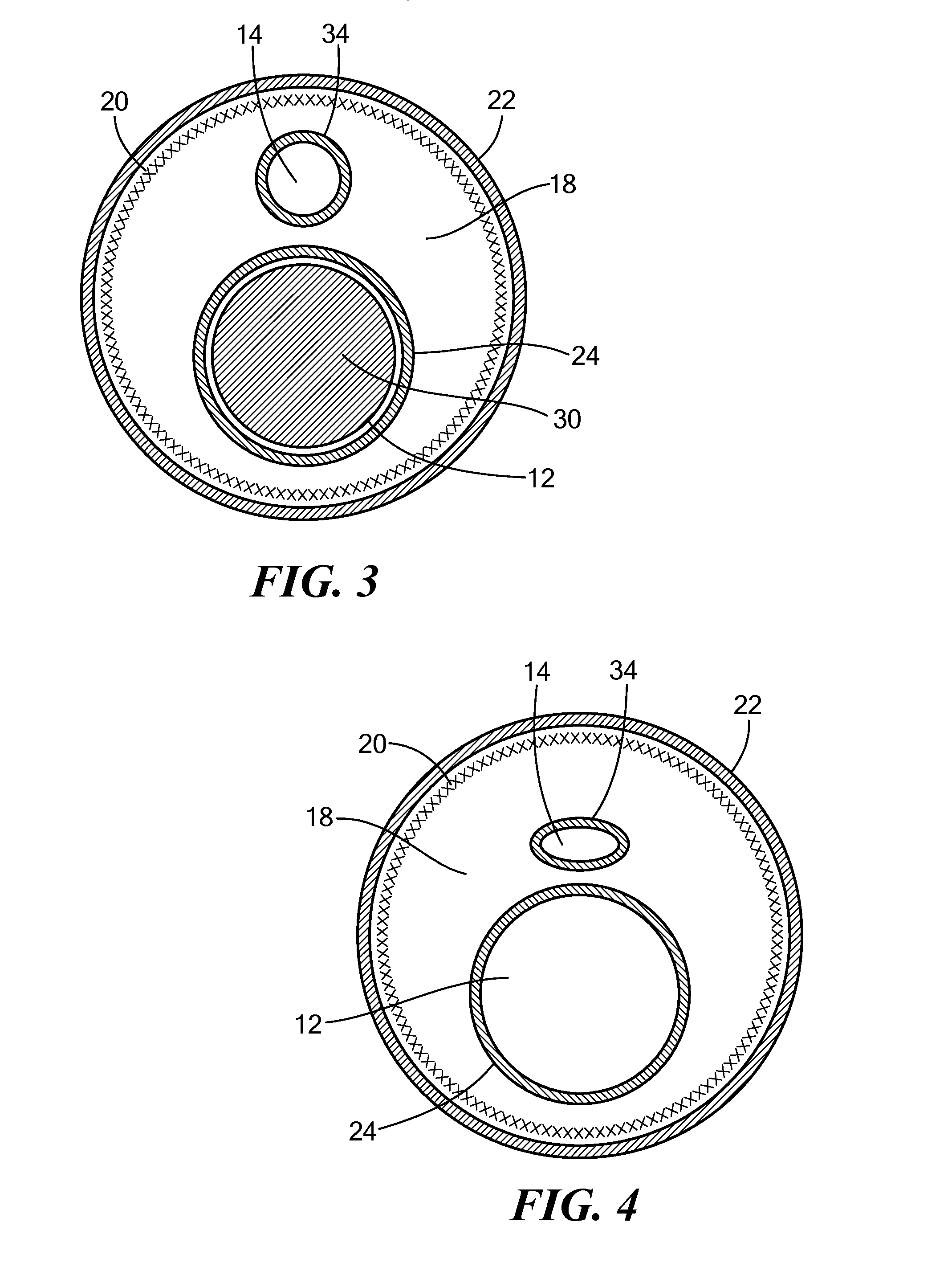Multi-lumen device with non collapsable minor lumen
- Summary
- Abstract
- Description
- Claims
- Application Information
AI Technical Summary
Benefits of technology
Problems solved by technology
Method used
Image
Examples
Embodiment Construction
[0034]Referring now to FIG. 1, a cutaway view of an exemplary multi-lumen steerable catheter is shown. Although the methods and configurations shown and described herein may be used for, at least, steerable catheters and steerable sheaths, any type of multi-lumen device capable of being produced as shown and described here is referred to herein for simplicity as “steerable catheter,”“catheter,” or “elongate body.” For example, the methods and configurations shown and described herein may be used for multi-lumen catheters or sheaths that are not steerable or have a plurality of minor lumens with fewer than all minor lumens housing a pull wire (such as catheters having one or more minor lumens for fluid injection or return, electrical connection to the console, housing sensors, or other non-pull wire uses). Also, although the individual layers of the steerable catheter are shown having difference lengths, it will be understood that this is for the sake of illustration only, and that a...
PUM
| Property | Measurement | Unit |
|---|---|---|
| Luminous energy | aaaaa | aaaaa |
Abstract
Description
Claims
Application Information
 Login to View More
Login to View More - R&D
- Intellectual Property
- Life Sciences
- Materials
- Tech Scout
- Unparalleled Data Quality
- Higher Quality Content
- 60% Fewer Hallucinations
Browse by: Latest US Patents, China's latest patents, Technical Efficacy Thesaurus, Application Domain, Technology Topic, Popular Technical Reports.
© 2025 PatSnap. All rights reserved.Legal|Privacy policy|Modern Slavery Act Transparency Statement|Sitemap|About US| Contact US: help@patsnap.com



